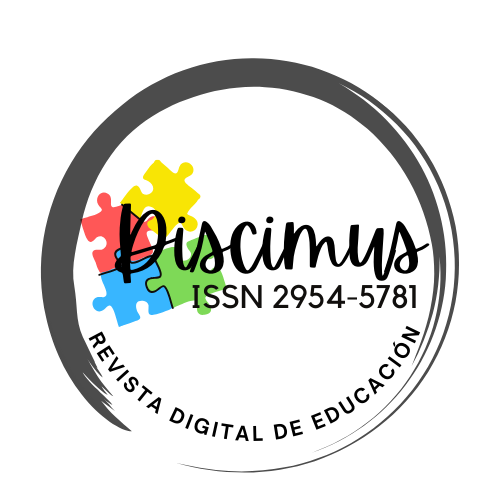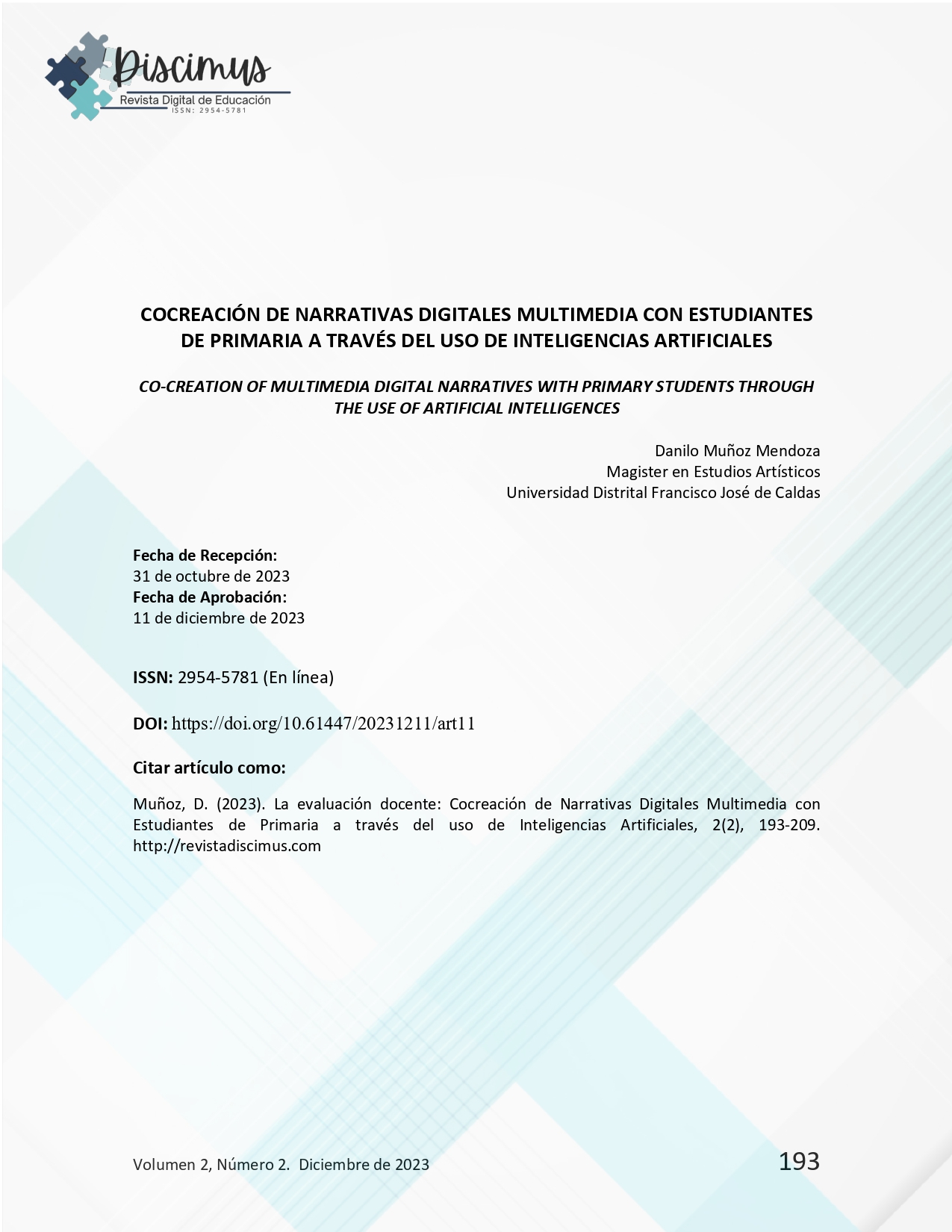Co-creation of multimedia digital narratives with primary students through the use of artificial intelligences
Main Article Content
Abstract
This article brings together the results of the research-creation process “Soñemos con Ovejas Eléctricas”, which aims to create multimedia digital narratives with primary school students from Juan Rey IED School. To this end, the strengthening of collaborative work was proposed through a co-creation exercise, where students are active participants, recognizing in them their ability to be critical interlocutors of their works. In addition, by working on digital platforms and analog media, it was looked to strengthen students’ communicative skills and the use of multimedia language. Applying the participatory action research method with a qualitative approach, the project was divided into four phases: appropriation, co-creation, design, and review. Each narrative was co-created by students and the research teacher, with the support of tools that employ artificial intelligence. Finally, the narratives were digitized and shared on the website homonymous to the project, designed as a multimedia space that continues to be built thanks to the contributions of parents and the educational community in general. It concludes with the problematization of the use of AI in educational environments, collaborative work, and the imminent need to closethe digital gap.Keywords:co-creation, multimedia, artificial intelligence, digital narratives.
Downloads
Article Details
Section

This work is licensed under a Creative Commons Attribution-NonCommercial-ShareAlike 4.0 International License.
Open Access Policy at Discimus Journal
Discimus Journal is committed to the promotion of free circulation of scientific and academic knowledge, simultaneously ensuring appropriate acknowledgment for our authors while adhering to the ethical principles of scientific publishing. In alignment with this goal, Discimus publishes all its articles under the ATTRIBUTION-NONCOMMERCIAL-SHAREALIKE 4.0 INTERNATIONAL CC BY-NC-SA 4.0
How to Cite
References
Bartolomé, A.R. (1994). Multimedia interactivo y sus posibilidades en educación superior. Pixel-Bit. Revista de Medios y Educación, 1, 5-14. http://hdl.handle.net/11441/45417
Bartolomé, A.R. (2002). Multimedia para Educar. Barcelona: Edebé.
Bonina, C. (2015). Cocreación, innovación y datos abiertos en ciudades de América Latina: lecciones de Buenos Aires, Ciudad de México y Montevideo. Zenodo. https://doi.org/10.5281/zenodo.4304460
Chamba-Eras, L.; Irene Robalino, P. & Orellana-Malla, A. (2022). Capítulo 7. Enseñanza-aprendizaje de la Inteligencia Artificial en primaria y secundaria. En: Investigación Educativa en el Ecuador 1,92-114. http://repositorio.unae.edu.ec/bitstream/56000/2514/1/INVESTIGACION%20EDUCATIVA%20-92-114.pdf
Drulă, G., (2015). Formas de la convergencia de medios y contenidos multimedia: Una perspectiva rumana. Comunicar, XXII (44), 131-140. https://www.redalyc.org/pdf/158/15832806014.pdf
Gómez, Pedro P. (2017). La investigación-creadora o el horizonte ampliado de la investigación creación. Estudios Artísticos: revista de investigación creadora, 3 (3) pp. 9-10. DOI: https://doi.org/10.1448/ear.v3i3.12525
Gómez, Pedro P. (2020). Investigación-creación y conocimiento desde los estudios artísticos. Estudios Artísticos: revista de investigación creadora, 6(8) pp.64-83 DOI: https://doi.org/10.14483/25009311.15690
Riveros Solórzano, H. J. (2023). Investigación creación en comunicación - educación: La imaginación como potencia transformadora y comunicativa. Revista Boletín Redipe, 12(10), 30–43. https://doi.org/10.36260/rbr.v12i10.2025
De Oliveira Figueiredo, Gustavo. (2015). Investigación Acción Participativa: una alternativa para la epistemología social en Latinoamérica. Revista de Investigación, 39(86), 271-290. Recuperado el 24 de octubre de 2023, en: http://ve.scielo.org/scielo.php?script=sci_arttext&pid=S1010-29142015000300014&lng=es&tlng=es.
Meneses-Ortegón, J.P; Jové, T.; Puiggalí, J.; R. Fabregat, R. (2020). Representación del conocimiento de un proceso de co-creación de material educativo. En: TecnoLógicas, vol. 23, no. 47, pp. 159-177 https://doi.org/10.22430/22565337.1493
Nanclares, R. (2014). Cocreación: una propuesta para la recolección, sistematización y análisis de la información en la investigación cualitativa. Enl@ce Revista Venezolana de Información, Tecnología y Conocimiento. 11 (1), 11-24 https://www.redalyc.org/articulo.oa?id=82331500005
Quintana, A. (2018). Hipertextualidad y Conectividad: Alternativas De La Cultura Digital Para La Configuración De Ambientes Educativos. [Tesis doctoral Universidad Distrital Francisco José de Caldas] https://repository.udistrital.edu.co/bitstream/handle/11349/26015/QuintanaRamirezAntonio2018.pdf?sequence=1&isAllowed=y
Ramírez-Montoya, M. S., & García-Peñalvo, J. (2018). Co-creación e innovación abierta: Revisión sistemática de literatura. Comunicar, 54, 9–18.
Romero, M., y Patiño, A. (2018). Usos pedagógicos de las TIC: del consumo a la co-creación participativa. Revista Referencia Pedagógica, 6(1), 2-15. https://rrp.cujae.edu.cu/index.php/rrp/article/view/137
Scolari, C. (2008). Hipermediaciones: Elementos para una teoría de la comunicación digital interactiva. Barcelona: Gedisa.
UNESCO (2019). Consenso de Bejín. Sobre la inteligencia Artificial y la educación. UNESCO: unesdoc.unesco.org/ark:/48223/pf0000368303/PDF/368303qaa.pdf.multi

